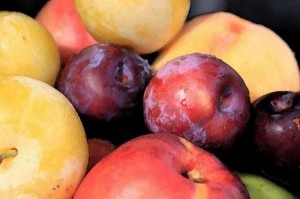 There are many great fruits, vegetables, herbs and spices, which can help with diabetes. However, you do not find one everyday that can help with obesity and diabetes.
There are many great fruits, vegetables, herbs and spices, which can help with diabetes. However, you do not find one everyday that can help with obesity and diabetes.
Over 25 million people in the United States have been diagnosed with diabetes and another million will be diagnosed before this time next year. It is becoming a very common disease that is typically caused by insulin resistance. Insulin is produced through the pancreas and is important is all of our bodies to help with our brain function and our growth process.
While many herbs and spices have popped up in the past to help with many diseases, including diabetes, simple fruits are skipped over in the process. According to new studies prepared by Texas ArgiLife Research, three fruits in particular have recently been found to lessen the risk of diabetes and obesity. Plums, nectarines and peaches have been helpful in fighting off obesity-related diabetes and other cardiovascular health risks.
The study showed that the compounds in stone fruits could help with the signs and symptoms of metabolic syndrome. According to Dr. Luis Cisneros-Zevallos, AgriLife Research food scientist, metabolic syndrome can lead to serious health conditions via inflammation and obesity.
Cisneros-Zevallos said, “In recent years obesity has become a major concern in society due to the health problems associated to it. In the U.S., statistics show that around 30 percent of the population is overweight or obese, and these cases are increasing every year in alarming numbers.” He also addressed that lifestyle, diet and genetic predisposition are major role toward obesity but that “the major concern about obesity is the associated disease known as metabolic syndrome.”
He reported that, “Our studies have shown that stone fruits — peaches, plums and nectarines — have bioactive compounds that can potentially fight the syndrome. Our work indicates that phenolic compounds present in these fruits have anti-obesity, anti-inflammatory and anti-diabetic properties in different cell lines and may also reduce the oxidation of bad cholesterol LDL which is associated to cardiovascular disease.”
Cisneros-Zevallos explains, “Our work shows that the four major phenolic groups — anthocyanins, clorogenic acids, quercetin derivatives and catechins — work on different cells — fat cells, macrophages and vascular endothelial cells. They modulate different expressions of genes and proteins depending on the type of compound. However, at the same time, all of them are working simultaneously in different fronts against the components of the disease, including obesity, inflammation, diabetes and cardiovascular disease.
“Each of these stone fruits contain similar phenolic groups but in differing proportions so all of them are a good source of health promoting compounds and may complement each other,” he said, adding that his team plans to continue studying the role of each type of compound on the molecular mechanisms and confirm the work with mice studies.” He stated.